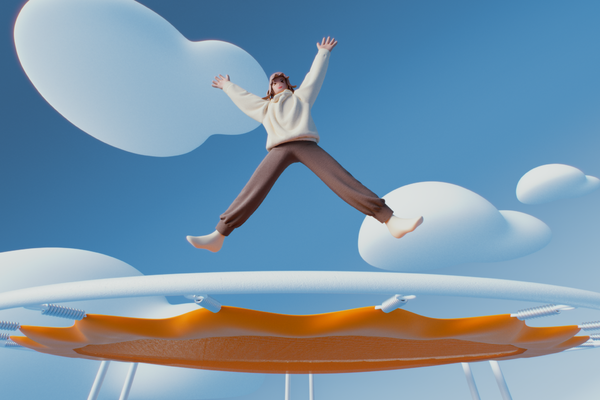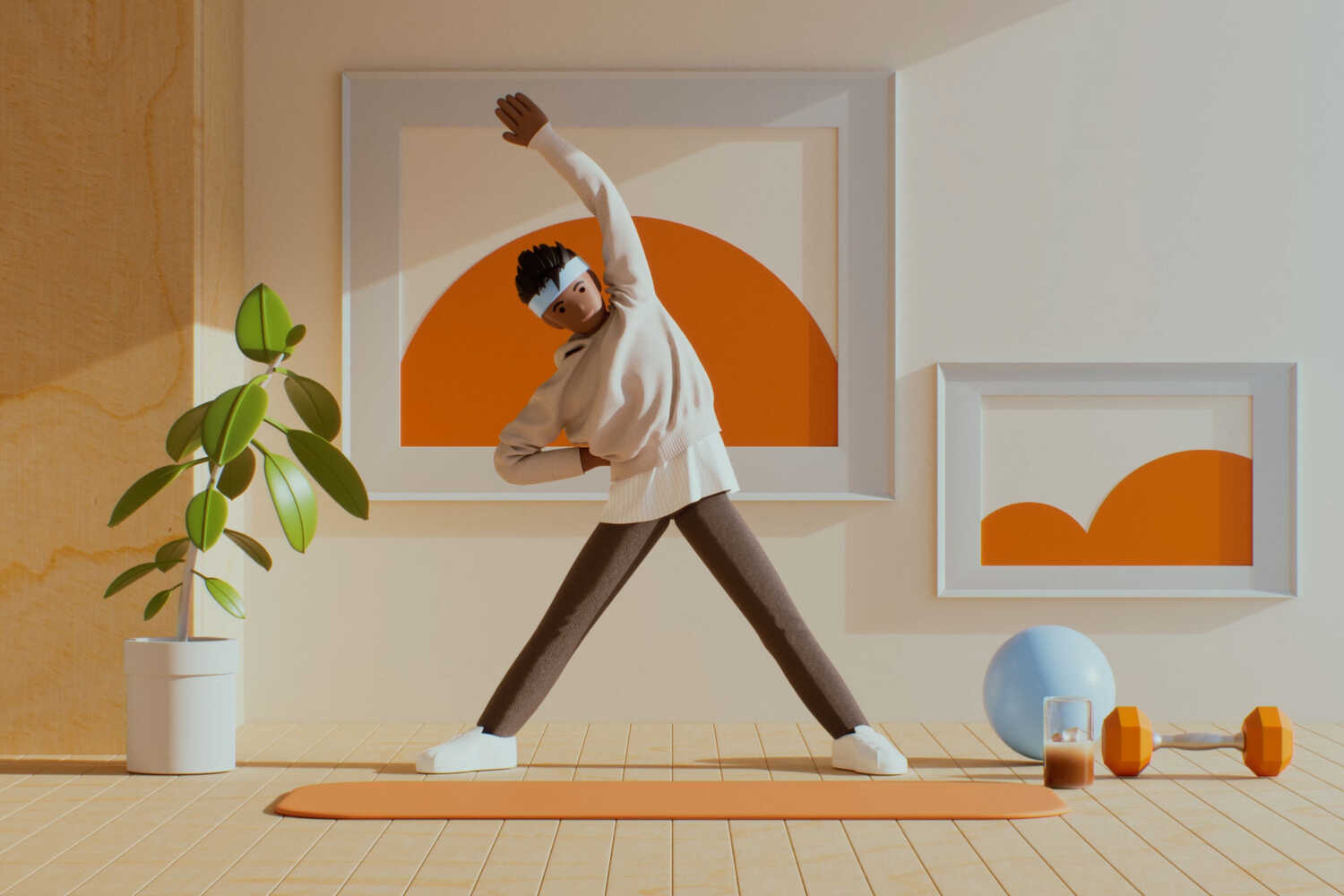The 6-Day Energy Challenge – The New York Times

To kick off our 6-Day Energy Challenge, we’re focusing on daytime rest.
When you think about increasing your energy, getting better sleep probably comes to mind. A night of quality slumber — at least seven hours for adults — is critical for cognition and alertness. But many of us struggle to get enough, or we wake up less than refreshed.
Daytime rest, however, is a little easier to pull off. Research suggests that taking short, revitalizing breaks can help you fortify yourself throughout the day. These breaks aren’t naps, but they offer similar benefits, restoring attention, reducing fatigue and increasing vitality, and improving well-being and mood.
Prioritizing these moments is a form of preventive care, said Dr. Sue Varma, a clinical assistant professor of psychiatry at the N.Y.U. Grossman School of Medicine and author of the upcoming book “Practical Optimism.”
People tend to think of daytime rest as “a reward permissible only when you ‘deserve’ it,” she said. But it should be a daily health practice, just like exercising or eating well.
Carve out an ‘oasis moment.’
Today, you’ll take what Dr. Varma calls an “oasis moment,” a small respite from the literal and figurative noise around you.
Find five minutes.
First, figure out when you can take a five-minute break — long enough for you to feel refreshed, she said, but brief enough that you can actually fit it in.
Dr. Varma recommends doing it before your energy levels dip. It might seem counterintuitive, but research suggests that rest can be more effective at restoring your energy when it’s taken before you are tired, as opposed to after.
For people who keep a regular daytime schedule, midmorning is the best time, said Cindy Wu, a professor at Baylor University’s Hankamer School of Business who studies workplace breaks. At that point, she said, “you’ve only depleted a little bit of the resources, so it’s easier to get them back.”
That said, if your morning is booked (or if you work nights and sleep during the day), taking an oasis moment at any time has benefits, Dr. Varma said.
Seek out a calming spot.
Mute your phone or leave it in another room. If you’re home, find a quiet place that’s comfortable for sitting, Dr. Varma said. If you’re at work, scout out a relatively peaceful location — a seat in the cafeteria or break room, a bench outside, or even your car if you drive to work. The setting is less important than your intention to take a few minutes for yourself, she added.
In fact, you don’t need to sit, or even be quiet. Dr. Wu’s findings suggest that it doesn’t matter what you do on your break — it could be a five-minute walk or a quick coffee — as long as it’s time spent away from work doing something you enjoy. “We found that the key characteristic to make that break replenishing was that choice, that autonomy,” Dr. Wu said.
Experiment with ‘wakeful relaxation.’
Take some slow, deep breaths. Doing this for five minutes can help you feel less depleted.
This should not be confused with meditation, Dr. Varma said. An oasis moment isn’t rigid. Aim for a state of what she calls “wakeful relaxation” — you should feel calmer but still alert. Try to quiet your mind, but don’t strive to zone out. You can even listen to your favorite songs while you take your break.
Afterward, notice how you feel: Are you a little more refreshed? Taking this break, Dr. Varma added, might also give you a sense of mastery and control. “You’ve made space and time for something that’s beneficial,” she said. “And you feel like you’ve achieved something for the day, similar to making your bed.”
Rest is a “highly therapeutic, untapped resource,” and the positive effects can build over time, Dr. Varma said. If you enjoyed this exercise, consider scheduling a five-minute break every day this week, and in the weeks and months following, to keep the rewards coming.
Below you’ll find a guided daytime rest exercise from Octavia Faith Ann Raheem, a meditation teacher who conducts rest retreats. She recorded it just for participants in our 6-Day Energy Challenge.
Need help resting? Try this audio exercise.
Octavia Faith Ann Raheem, author of “Pause, Rest, Be: Stillness Practices for Courage in Times of Change,” will take you through a short practice designed to leave you energized and refreshed.
This is Day 2 of the 6-Day Energy Challenge. To start at the beginning, click here.
When you’re wiped out, getting up and moving might sound like a real drag. But the less active we are during the day, the more fatigued we feel.
Today’s challenge is a playful, slightly silly three-minute exercise.
Why is this a crucial part of an energy challenge? Because short bursts of movement can help reduce fatigue, relieve stress and improve your mood.
As soon as you start, your heart rate goes up, increasing the supply of oxygen to your muscles and brain, said Margaret Rice, a professor of neurosurgery, neuroscience and physiology at the N.Y.U. Grossman School of Medicine. This rush, she said, might “help you feel more alert for at least a little while afterward.”
She also said that dopamine — a hormone involved in pleasure, alertness and motivation — likely increases within those three minutes of movement. Which might explain why you may feel more focused and fired up when you’re finished.
A little movement can provide health benefits beyond the energy boost, too. In a 2022 study of over 25,000 British adults, researchers found that those who did a total of three minutes of vigorous movement each day had lower mortality and risk for cardiovascular disease than those who didn’t.
Ready to start moving? You won’t need much more than your imagination.
Move like a pro.
Over the course of three minutes, you’ll imitate a boxer, a ballerina, a tennis player, a basketball player, a runner, and, to cool down, a yoga practitioner.
For over two decades, Kelly McGonigal, a health psychologist, lecturer at Stanford University and author of “The Joy of Movement,” has also been an exercise instructor — and this activity, she said, is a crowd-pleaser. It’s fun, it can be adapted for all abilities and you can wear your regular clothes.
Dr. McGonigal suggested doing this exercise first thing, to get your day off to an energetic start. But really you can do it anytime you have three minutes and need a lift.
Set the stage.
First, find a place where you can move around comfortably. Then run through each of the following for 30 seconds — for three minutes in total. (You can use the animated timer below: It will show you the next movement when it’s time to switch.)
Act like an athlete.
When you’re ready, start doing the following activities.
“Don’t overthink it, just do it,” Dr. McGonigal said. “You can’t do this wrong.”
Here are a few suggested moves to get you started:
Boxing. Throw some jabs, pretend you’re hitting a heavy bag, or alternate between fast and slow punches.
Ballet. Raise your arms above your head to form a circle. Stretch each leg forward and point your toes. Stand on tiptoe and come back down. Do a pirouette or a leap.
Tennis. Try a backhand and forehand swing. Bounce on your heels and return a volley. Throw a “ball” into the air and crush a serve.
Basketball. Dribble the “ball,” take a shot or jump into the air and block an imaginary opponent.
Running. Jog in place, pumping and swinging your arms, or throw your hands in the air and sail through the finish line (victory dance optional).
Yoga. Assume any pose or posture that makes you feel grounded, such as standing in “mountain” pose with your hands on your heart.
At the end of the three minutes, notice how you feel. Is your heart rate up? Are you breathing more deeply? Do you have more energy? Did your mood lift a little?
I field-tested this with three generations of people, including my neighbor who is in kindergarten, my teenage nephew and my 81-year-old father. My dad balked at first, but when we began “boxing,” he couldn’t resist joining in and demonstrating an uppercut punch. During the basketball segment, my nephew crowed that he was blocking my “jump shot.” By the end, they were all laughing — and energized.
This is Day 3 of the 6-Day Energy Challenge. To start at the beginning, click here.
When I wake up in the morning, my first thought is usually about what I want to eat — and as soon as I’m done with a meal, I’m already planning the next one.
This tendency to look ahead is pretty common, said Dr. Nate Wood, a culinary medicine researcher at the Yale School of Medicine and a trained chef. But, he added, “rarely do we look back and reflect on how the foods that we eat make us feel, unless maybe our stomach is upset.”
Tuning in to how our food affects us, he said, can help us understand which foods give us energy and which make us sluggish. It can also help us eat for better energy going forward. That’s the focus of today’s challenge.
Track your energy after you eat.
The task is simple: Notice how the foods you eat make you feel. An hour and a half to two hours after you have a meal or snack, jot down any sensations you’re experiencing: Are you satisfied, tired, peckish? Then rate your energy level from one to five.
Why should you wait for an hour or two after eating? That’s when digestion is well underway, Dr. Wood said. As your meal breaks down, glucose enters your blood stream and the pancreas secretes insulin, which your cells use to absorb the glucose for energy. As your brain and gut send signals to each other about how the food is being processed, you’ll be able to get some idea of whether the food has energized you or is making you feel depleted.
Every meal doesn’t need to be viewed solely as fuel for the tank — food should also be pleasurable, of course. But paying attention to what you eat can help you feel better in the long run. Some questions to ask yourself: Was this meal mostly carbs? Was there a lot of sugar? Did I eat any protein?
One day of tracking should give you some insight into how different foods affect your energy. To get an even more accurate gauge, Dr. Wood suggested trying this exercise for the next three days. Then, if you want, you can use those clues to focus on foods (and combinations of foods) that give you energy.
Feeling inspired to make a few changes? Here are some ideas.
If you want to get more energy from your meals, there are small adjustments you can make.
Filling your plate with foods rich in fiber, complex carbs and protein can slow the absorption of sugar into the bloodstream and help prevent fatigue, Dr. Wood said. If you can weave that trifecta into your meals and snacks as much as possible, you may feel more energized.
I told Dr. Wood that I typically have a low-protein breakfast, like a fruit smoothie or a slice of whole grain toast. Two hours later, I’m usually drooping.
He suggested adding avocado along with shredded chicken and sriracha to my toast, or protein powder or a spoonful of nut butter to my smoothie, so that my energy lasts much longer.
Dr. Wood also said that “lunch and dinner foods can often be healthier than breakfast foods, and can be easier to incorporate vegetables.” This made me feel great, since one of my colleagues had recently inspired me to start eating leftovers for breakfast. She’ll have things like quinoa with stewed chickpeas and tomatoes. Now I’m aiming to do dinner for breakfast more often.
For midday snacks, Dr. Wood said to keep sources of lean protein handy to pair with complex carbs, such as whole-grain crackers with hummus or cottage cheese.
Lunches and dinners should follow the same formula, Dr. Wood said. Lunch might be a curried tuna salad sandwich with arugula on whole-grain bread, along with a handful of berries, he suggested. Dinner might be a three-bean chili with Greek yogurt and scallions, with a baked sweet potato sprinkled with cinnamon on the side.
This exercise isn’t about deprivation, but about finding a formula for a steadier energy supply, Dr. Wood said. And for the majority of people, he added, making small changes “leads to change that is more sustainable.”
Craving a delicious, sustaining snack? Try this energy bar recipe from New York Times Cooking.
This easy, customizable energy bar recipe was created by Genevieve Ko, an editor at New York Times Cooking. It’s packed with fiber, thanks to whole wheat flour and tangy dried fruit, and nuts add protein — and crunch.
Save the recipe: Energy Bars
Source link






